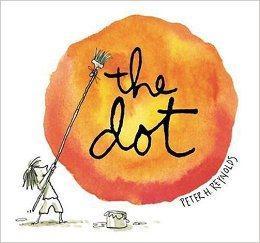Since I spent most of my summer changing my own mindset after a rather trying school year, I decided I really needed to teach mindset to my students.
Here’s why: Teachers can teach, support staff can support, but a student’s mindset really controls what is learned and how successful each student becomes.
I came across a wonderful mindset lesson from Barbara’s blog, The Corner on Character. Barbara was kind enough to encourage me while I planned my own lessons, as I found myself having a closed mindset along the way (I’ll explain this later).
Well, I’ve completed almost all of them in grades 1-5, and I’m happy with how each turned out!
Here’s how my lessons went….
I introduced the word mindset and allowed students to guess what it meant. I got some great answers: “when your mind is set on something” and “how your mind thinks about things.”
Then, I told them about closed vs open mindset. Students paired up and were given a minute to discuss the difference. Again, I got some great answers: “open is when you’re thinking about things, closed is when you’re not” and “open is when you want to talk about something, closed is when you aren’t willing to talk about things.”
I gave a few examples of what someone with a closed mindset would say: “This math is too hard,” “I can’t do this,” “I’m not going to try,” “I can’t make any friends,” and “No one here helps me.” I asked them how well someone with that kind of mindset would learn; they said not very well at all!
I gave a few examples of what someone with an open mindset would say: “This math is hard, but I’m going to keep trying,” “I can do this,” and “I don’t have any friends….yet.” Students told me someone with this kind of mindset would learn much better. We also discussed the power of yet - adding yet onto the end of a sentence can make all the difference!
We practiced the sign for each mindset:
(closed on the left, open on the right with fingers wiggling)


Finally, we read this book to discuss the mindset of each character and how the mindset of little Vashti changed over the course of the story:

I was quite impressed with my students as they were able to show me, using the hand signals, when mindsets changed and why, as well as how Vashti was able to pass on the idea of an open mindset to a younger friend.
As mentioned above, I found myself having a closed mindset as I planned my lessons. The reason for this was I felt the idea of mindset, while important, might be over the heads of my younger students in grades 1 and 2. I had a vision of young faces staring up at me blankly, completely uninterested or unable to grasp the concept. With some support from Barbara and others in the Elementary Counselor Exchange group on FB, my mindset became open and my lessons were delivered with ease. My students not only got the concept, but they remember it. AND, some of my teachers are continuing to use the concept already! Perfect-o!
I will say that I chose to use open vs closed instead of growth vs fixed mindset, to help with understanding the concept. It worked!
I’ll end with this little story from one of my 4th grade classes: In the middle of my mindset lesson, a boy was attempting to untie his knotted shoelaces and retie them. As he did this, he was talking out loud, which disrupted others, but I let it go. After a while, another boy offered to do it for him, to which the boy replied, “No! I think I can do this myself!” I started applauding him and told him he had just modeled for everyone how to have an open mindset. He was beaming with pride!
Now that I’ve taught mindset, I find opportunities to reference it all the time with students. Examples of mindset are everywhere! Mindset is a powerful thing! :)

